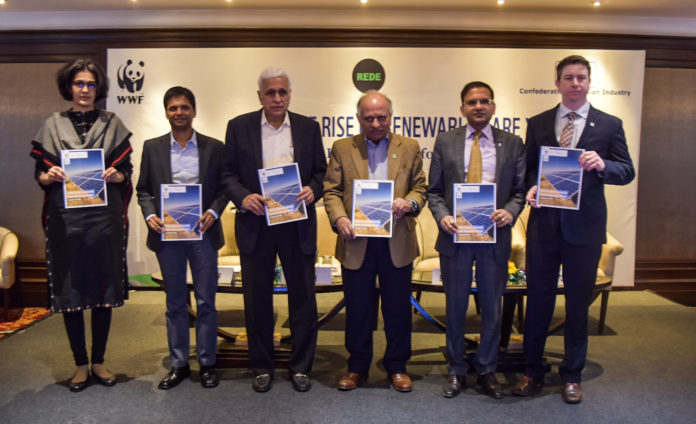New Delhi (NVI): Commercial and industrial (C&I) consumers in India utilise 51 per cent of the total generated power, and out of this, just three per cent is from the renewable energy, a WWF-India report said today.
The new WWF-India report, ‘Global Corporate Renewable Power Procurement Models: Lessons for India’, reviews the progress made by C&I consumers globally and in India for renewable power procurement and highlights the alternate RE procurement options.
It was launched at a WWF-India and CII event, The Rise of Renewables: Are You REDE?
Speaking about the report, Former Chairman, Karnataka Electricity Regulatory Commission (KERC) M R Sreenivasa Murthy said, “WWF’s report highlights the need for a balance in both increasing renewable energy capacity and also harnessing corporate demand that better supports the overall energy system.”
At present, the avenues available to C&I consumers to procure renewable power are limited to rooftop solar installations, open access solar and wind power, and RECs. However, even these options are not freely available because of various policy and market constraints.
With the growing C&I renewable power market worldwide, many new alternate procurement options have opened up. Virtual power purchase agreements (VPPAs), green tariffs, internationally tradable RECs (I-RECs) have already been successfully tried and tested in many countries.
There are also proposals to set up dedicated renewable power exchanges and facilitate peer-to-peer (P2P) trading.
The report examines various advantages and disadvantages for each of the options, exploring the suitability for specific consumer categories or segments. It also indicates, exploring green tariffs, VPPAs and I-RECs further in expanding the scope of RE uptake for C&I consumers through deeper consultation between stakeholders.
A collaborative effort to undertake pilot programmes and consumer awareness initiatives can build market confidence and momentum in the drive to increase renewable power consumption by C&I consumers.
Many corporates have been proactive and announced voluntary carbon mitigation targets, along with increasing their renewable power consumption, which was highlighted by Ravi Singh, Secretary General and CEO, WWF-India.
“Consumption of renewable power cannot only make the C&I consumers cost competitive and spur macro-economic growth, but also play a significant role in reducing India’s carbon emissions,” he said.
“Concerted government action is required to grow penetration of renewable power for these consumers. There are two broad areas of action required. First, we need tariff reform to reduce financial dependence of the DISCOMs on C&I consumers. Second, new procurement models need to be enabled,” Managing Director, Bridge to India, Vinay Rustagi said.
At the event, CII, Imperial College Business School, London, and WWF-India announced plans to unify their shared vision and complementary expertise to build capacity via the online course, ‘Corporate Renewable Procurement: Opportunities in India’.
Piloted in 2018, the course has successfully completed two cohorts, and is now set to be offered to a wider audience.








